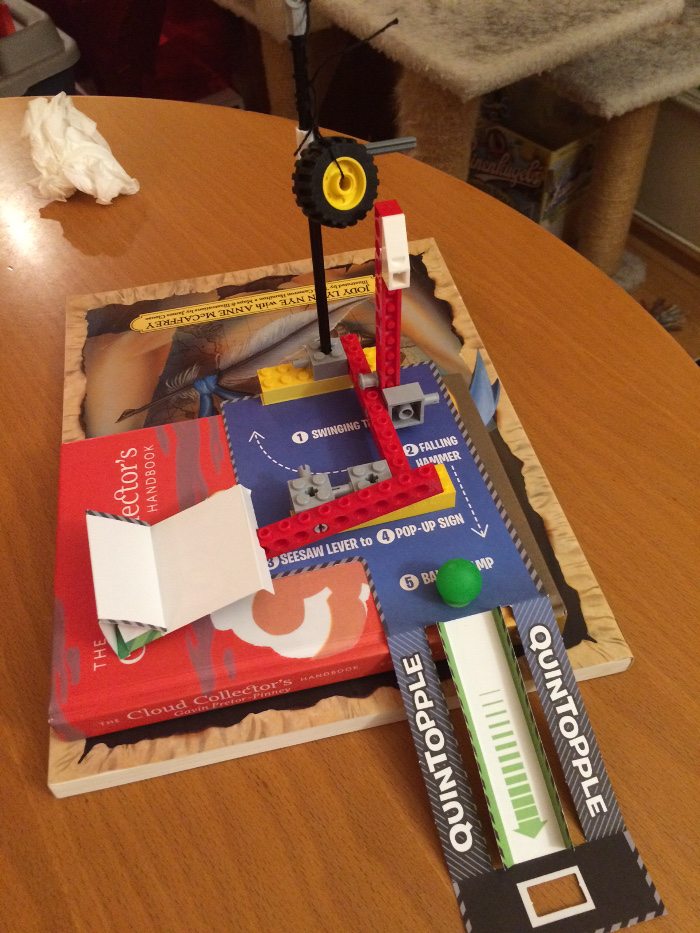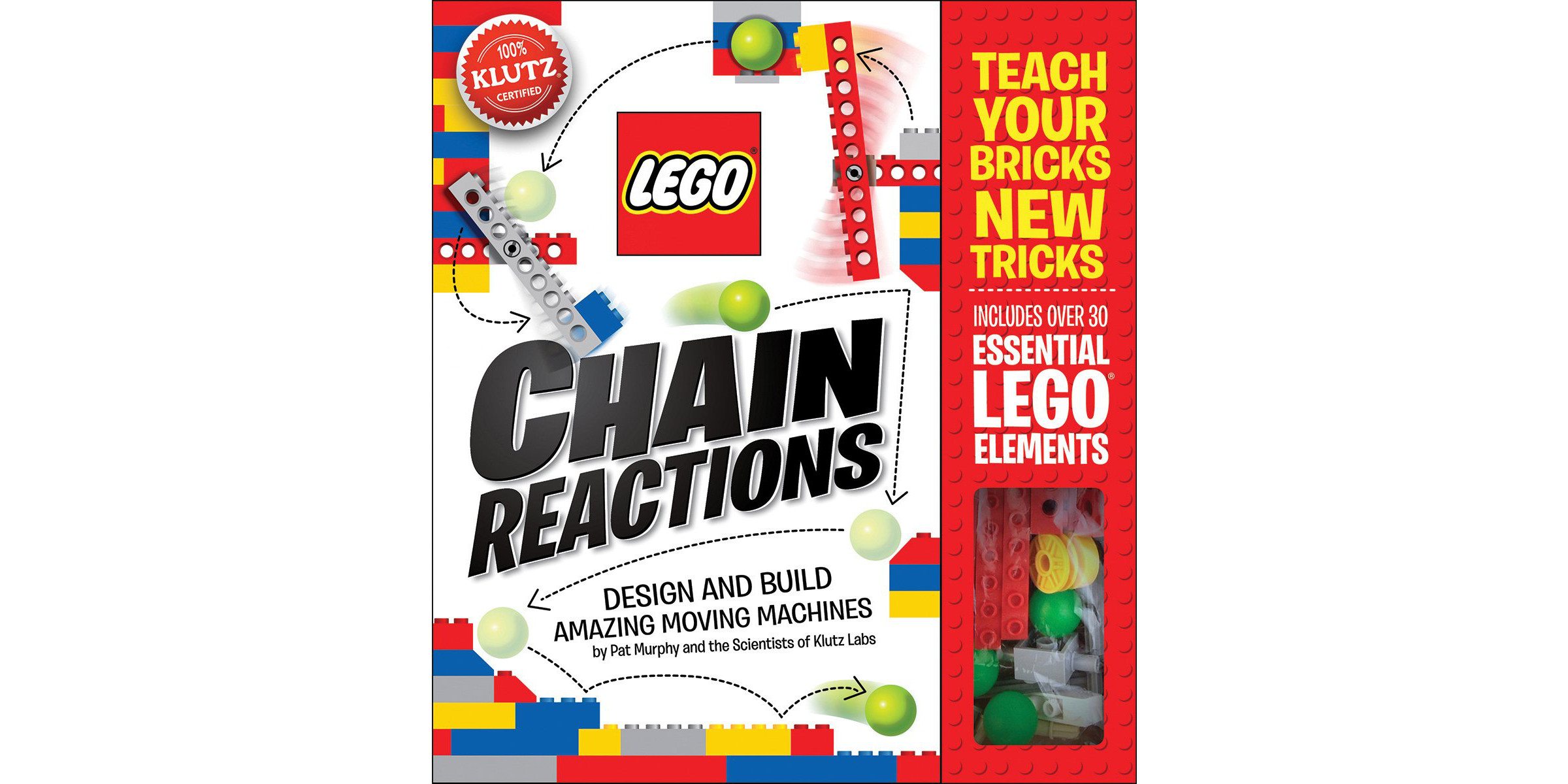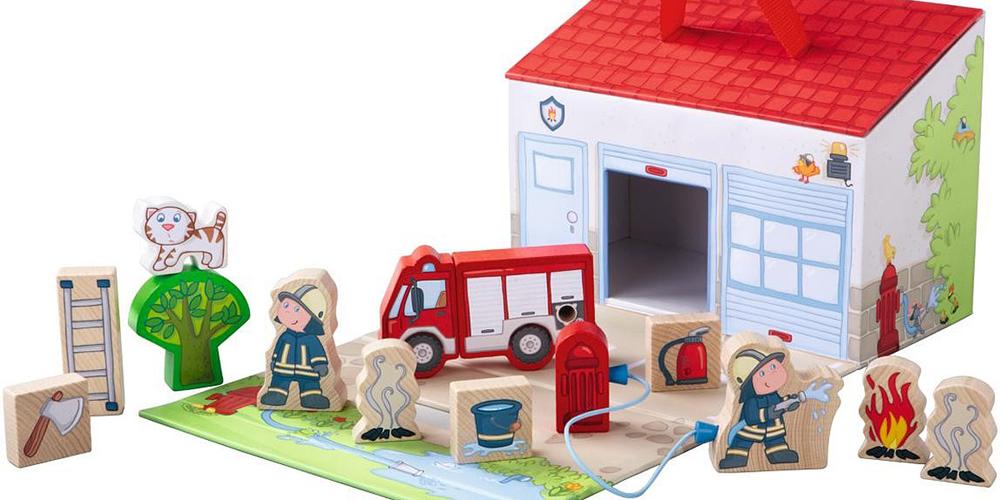
LEGO Education has been around for a while, creating educational kits and curricula to teach programming, simple machines, robotics, pneumatics, engineering, and more. From my experiences with the WeDo set and the Simple Machines curriculum, they are definitely worth the time and money. But they aren’t cheap, and it takes a while to get through the material. Great for homeschooling, but not necessarily for every family’s situation.
Fortunately, Klutz has put out a couple of books that are better for a conventional educational LEGO gift for your kids. Several years ago, they came out with LEGO Crazy Action Contraptions, and now they have LEGO Chain Reactions by Pat Murphy. Think Rube Goldberg devices, but with LEGO.

My kids recently spent some quality time with the book while I watched and made “helpful” suggestions. (They did fine without me.) The first project, Machine No. 1–Quintopple, starts you out making a multi-part contraption using only pieces included in the book. Paper, string, a ball, and LEGO pieces create a contraption powered by gravity which, if it’s put together correctly, pops up a sign at the end of the track.
As you get into Machine No. 2–Dominoes, you need to provide some of your own LEGO bricks to make larger and larger domino-type structures, which you will then knock down. Later projects add more ramps, pulleys, many extra LEGO pieces, and a lot more steps. By the end of the book, kids can use what they know and invent their own contraptions, limited only by their LEGO collection.
Each of the ten projects in the book has clear, step-by-step directions to build the component parts, a procedure to follow for beginning the movement of the contraption, and a scientific explanation of what is happening and what is being learned in that chapter. The book also comes with the paper ramps, signs, and more, along with 20 specialized LEGO pieces that you aren’t likely to have all of in your collection. Several of the projects also require you to use basic items from your own house, such as a book, and basic LEGO pieces from your collection.
What did we think of this book? We liked it a lot. It teaches real science in a fun way, and kids can do it on their own if needed. The paper pieces included in the book are a bit flimsy, though, and likely won’t stand up to being used more than a few times, depending on how careful your kids are. These paper pieces are also hard to get out of the back of the book, since they’re held into the binding and enclosed in a plastic envelope. But it will provide hours of fun, and learning while you’re having fun is the best way to do it.
LEGO Chain Reactions costs less than $20 and is a great activity book for homeschooling, after school, spring break, summer break, or just a science lesson on a rainy Saturday afternoon. It’s not only full of important scientific lessons, but it will also inspire kids to design their own contraptions.
Note: I received this book for review purposes.





Look’s perfect for my 9 Year old. Now on his wish list!
This is awesome ! Last year my sons and I did a Rube Goldberg machine using toys (video here : http://www.geekdad.fr/2014/08/diy-rube-goldberg-ta-chambre/). We used a few Lego pieces, but with such a book we would have done much better Lego based mechanisms and reactions. It’s now on my list for our next project, thanks for the heads up !
Thanks for the review, Jenny. The kit is now on our want list!